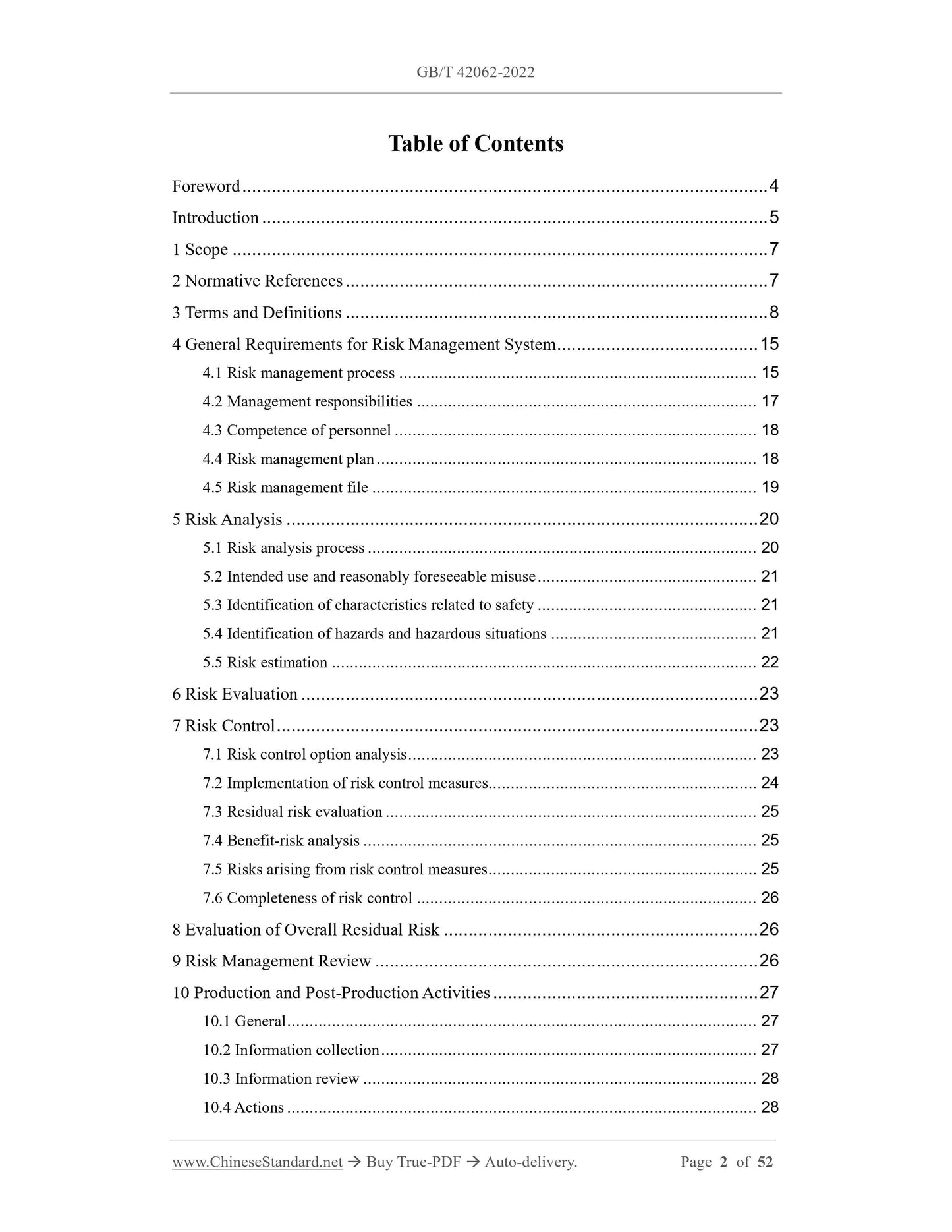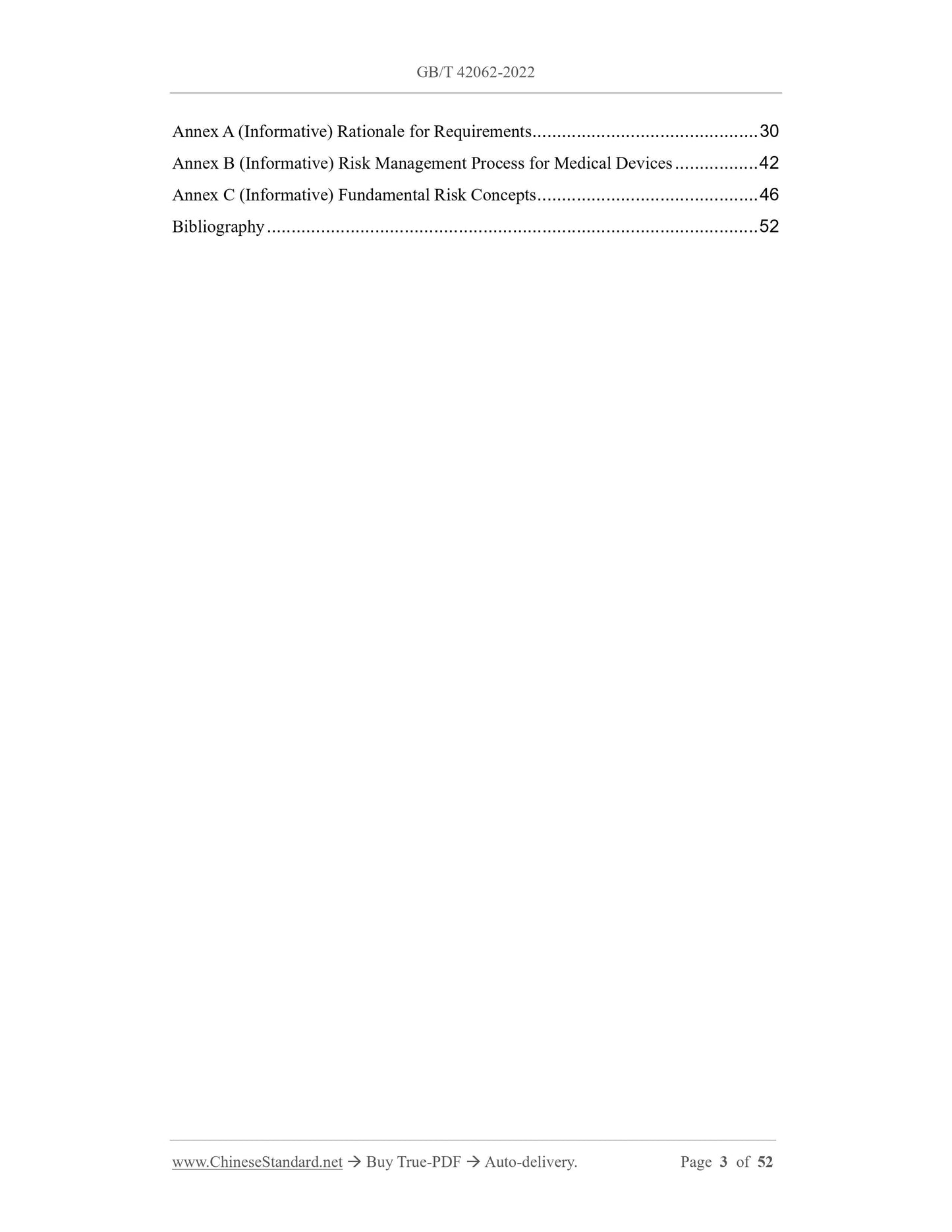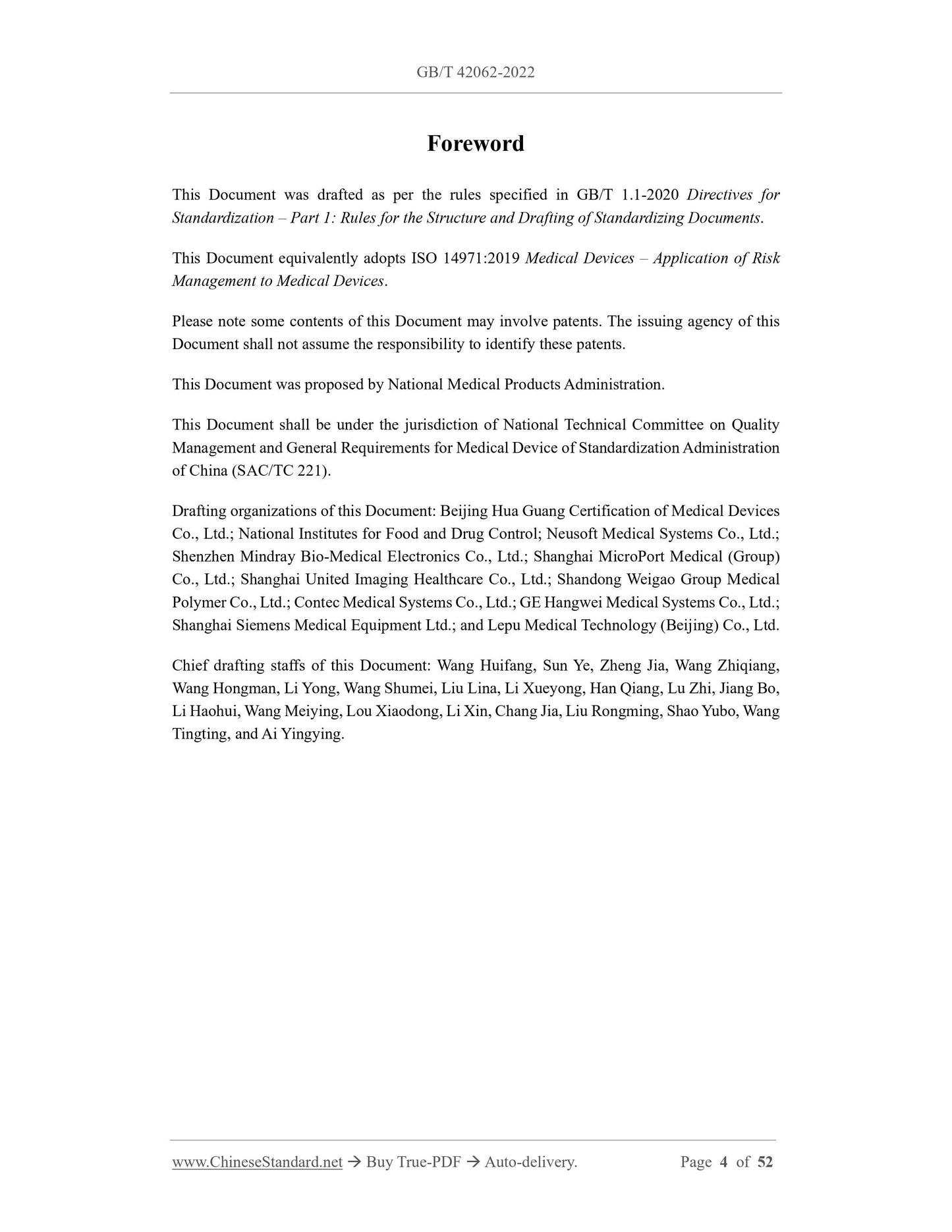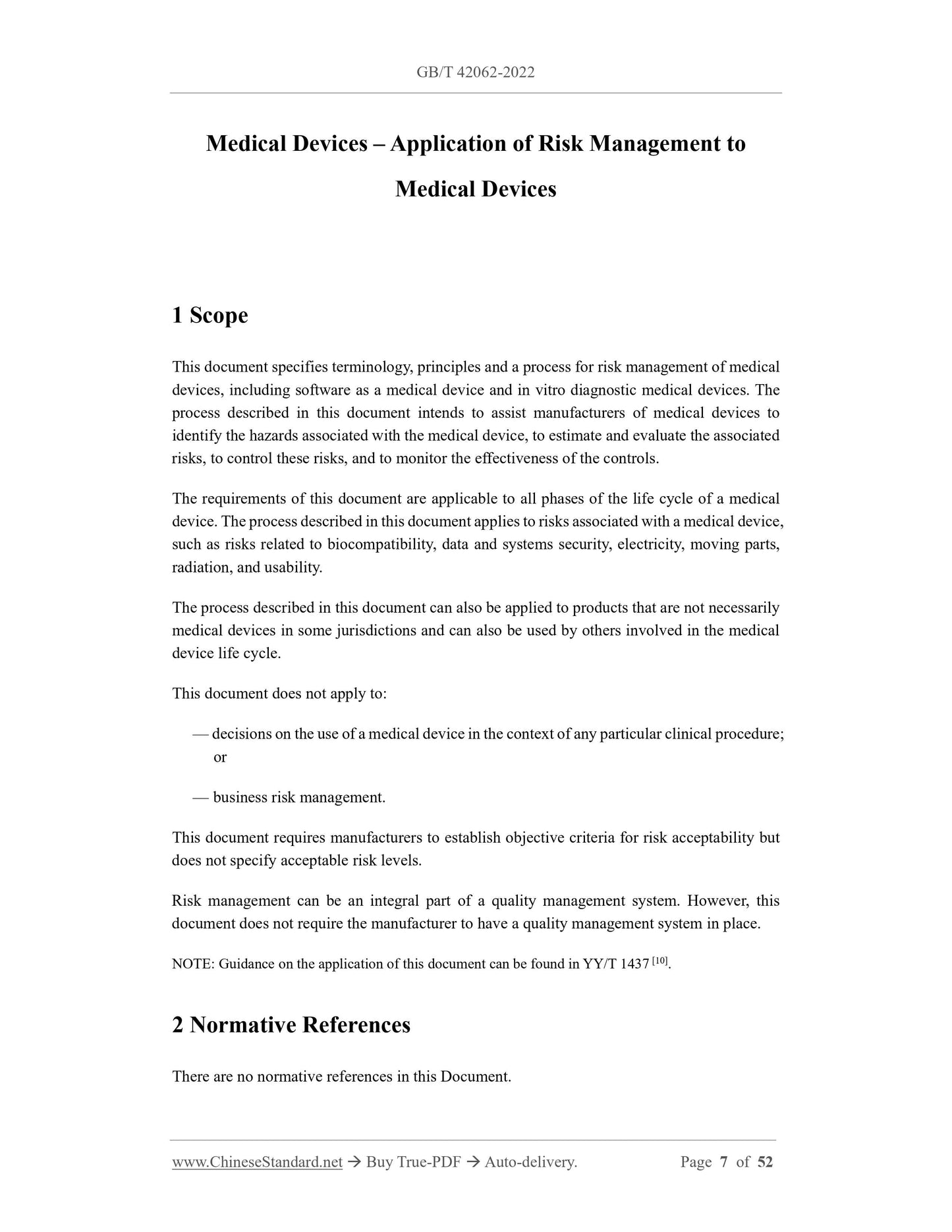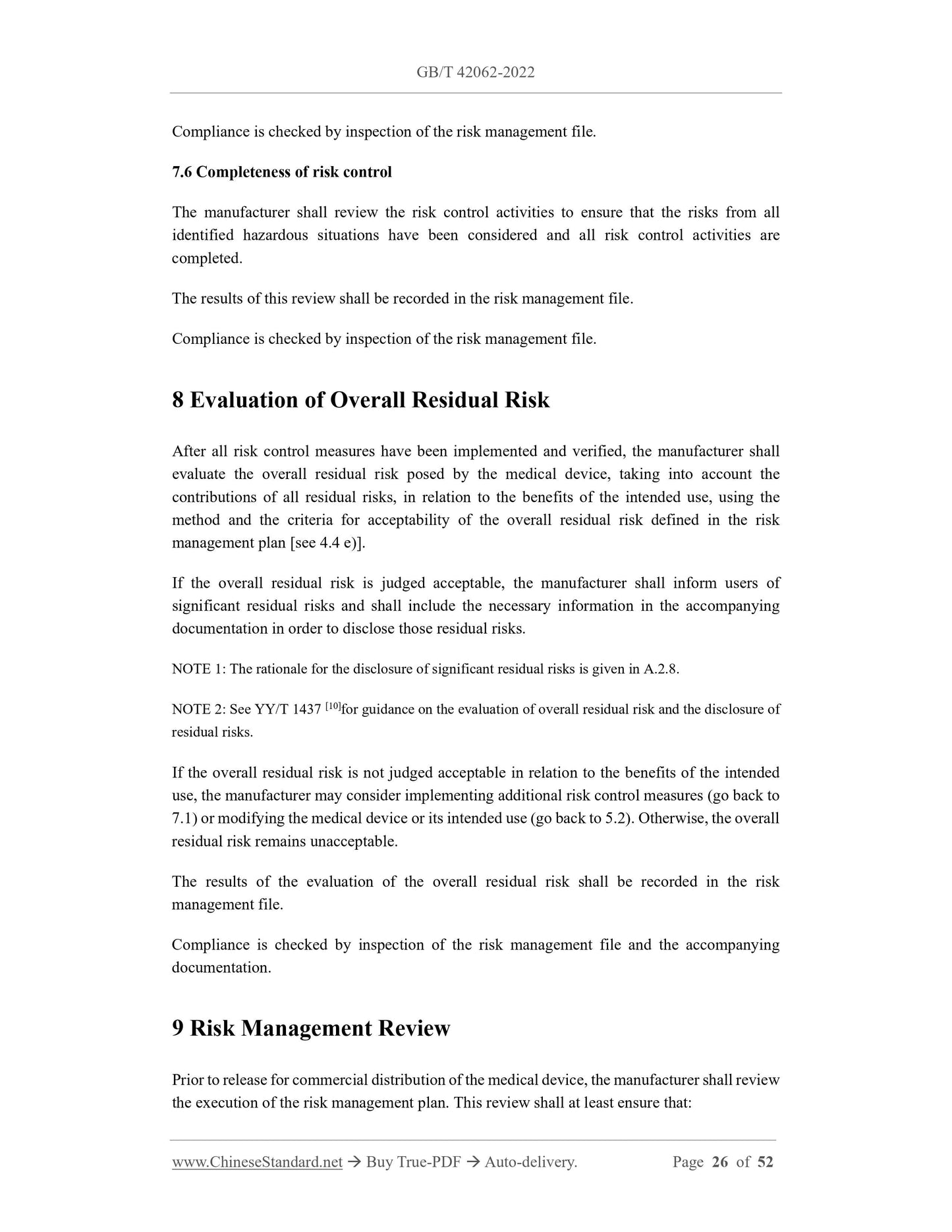1
/
of
6
www.ChineseStandard.us -- Field Test Asia Pte. Ltd.
GB/T 42062-2022 English PDF (GB/T42062-2022)
GB/T 42062-2022 English PDF (GB/T42062-2022)
Regular price
$590.00
Regular price
Sale price
$590.00
Unit price
/
per
Shipping calculated at checkout.
Couldn't load pickup availability
GB/T 42062-2022: Medical devices - Application of risk management to medical devices
Delivery: 9 seconds. Download (and Email) true-PDF + Invoice.Get Quotation: Click GB/T 42062-2022 (Self-service in 1-minute)
Newer / historical versions: GB/T 42062-2022
Preview True-PDF
Scope
This document specifies terminology, principles and a process for risk management of medicaldevices, including software as a medical device and in vitro diagnostic medical devices. The
process described in this document intends to assist manufacturers of medical devices to
identify the hazards associated with the medical device, to estimate and evaluate the associated
risks, to control these risks, and to monitor the effectiveness of the controls.
Basic Data
| Standard ID | GB/T 42062-2022 (GB/T42062-2022) |
| Description (Translated English) | Medical devices - Application of risk management to medical devices |
| Sector / Industry | National Standard (Recommended) |
| Classification of Chinese Standard | C30 |
| Classification of International Standard | 11.040.01 |
| Word Count Estimation | 38,372 |
| Date of Issue | 2022-10-12 |
| Date of Implementation | 2023-11-01 |
| Issuing agency(ies) | State Administration for Market Regulation, China National Standardization Administration |
Share

